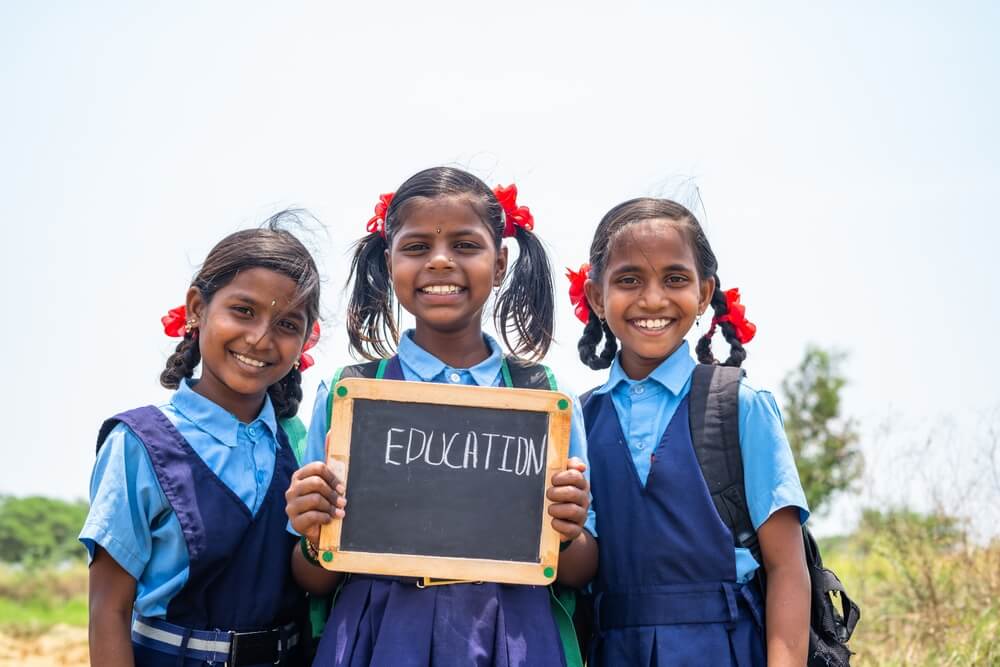One of a country’s most important resources is its human capital, and using this resource to its full potential requires fair access to education. For a country that is banking on its demographic dividend to power economic growth, ensuring education fairness becomes not just morally necessary but also strategically important for India. Even though India has made great progress toward reaching this objective, there are still issues in guaranteeing educational parity. Moreover, as part of the United Nations Sustainable Development Goal 4 (SDG4) that calls for inclusive and quality education for all, collective efforts are necessary to implement educational programs and activities that utilise existing networks, resources, and experience to reach and influence a wider section of the country’s population. In this context, CSOs, or civil society organisations are essential to implement comprehensive solutions that address the complex issues surrounding educational inequality, ensuring sustainability and effectiveness of individual actions by cooperating with each other toward achieving this important goal.
Driving synergies through increased collaboration
Knowledge exchange and designing all-encompassing solutions can effectively leverage the individual strengths of various CSOs and drive sustainable and positive change over the longer term. This synergy between organizations is a powerful force that resonates with the complexities of educational inequality; amplifying the impact of individual efforts by pooling in resources and enhancing the efficicay of educational initiatives. Collaborative projects promote reciprocal learning, best practice sharing, and knowledge exchange; also ensuring that stakeholders prevent repetition and work together to bring a variety of resources, skills, and expertise to the table. This can result in interventions that are more thorough and long-lasting, also presenting a unified front representing the interests of millions of students to the country’s policy makers. Moreover, actors who band together have a greater voice when promoting policy changes and reforms, ultimately supporting the ultimate goal of democratizing access to education. It also ensures that programs are sustainable and not dependent on the whims of a few institutions or individuals, effectively building a common framework for generations of young children to follow in the future.

Founder & Chief Executive
Study Hall Educational Foundation
Key challenges that need to be mitigated
Despite the obvious advantages of group action, several concerns frequently prevent CSOs from adopting this strategy. Many CSOs have distinct strategies for tackling educational inequality, with many expressing concerns that increased collaboration may change or jeopardize their existing strategies and force them to stray from their intended goals. However, if individual strategies and strengths are aligned with the common goal of improving access to education, CSOs could complement one another and achieve a multiplier effect that isn’t possible when working in silos. Similarly, CSOs may fear that collaborative efforts may dilute or alter their own programs that are informed by their organisational mission, domain knowledge, and well-considered theory of change. While such anxiety arises due to the fact that cooperative endeavours may require CSOs to modify or even depart from their current initiatives, maintaining a single, concentrated strategy is always desired to ensure the success of any cooperative endeavour. Rather, it is important to make sure that each CSO’s distinct contributions are acknowledged and incorporated into the overall strategy, relying on “co-branding” to preserve their unique identities while pursuing shared objectives. Ultimately, finding a balance between individualism and collectivism is crucial.
Ensuring timely action and pooling financial resources for better outcomes
Collaboration may slow down internal processes, unless CSOs build trust through open dialogue and achieve a clear delineation of responsibilities when working together. Implementing efficient project management techniques and rigorously following well-defined timelines are equally important. Moreover, the advantages of resource pooling and expanded reach can offset any marginal slowdown, as long as concerns such as maintaining donor confidentiality and proprietorial behaviour do not impair collective efforts. Ensuring transparent and fair distribution of funds while openly discussing financial arrangements, sharing funder information and jointly seeking funding is necessary to support partnerships that can promise greater impact. Additionally, CSOs need to be willing to make short-term sacrifices in view of the long-term benefits of increased collaboration, partnering with other players in the ecosystem to overcome myriad social problems. This can include the subject of girl child education, overcoming problems such as child marriage and domestic abuse, requires a holistic approach that involves working with women’s rights organizations to have the desired impact.

Co-Founder
ShikshaLokam
In summary, collective action is essential to achieve educational fairness and CSOs will play a valuable role in ensuring that every child in India receives a top-notch education in the near future. Overcoming anxieties and embracing joint endeavours to promote education equity will therefore be a collective responsibility that could secure the future of India and its future generations.



